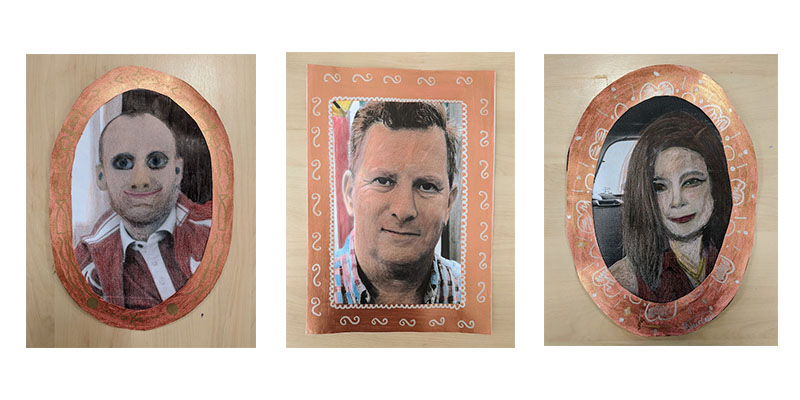- Events & Programs Home
- Calendar
- Accessibility
- Adults
-
Families & Teens
- Families & Teens Home
- 10x10 Teen Art Expo
- Art on the Rise
- Art Together: Art Making for Families with Children Ages 3–5
- Babies Sing with May Festival Minis
- Boy Scouts / Girl Scouts
- CAM Kids Day
- Family Storytime and Gallery Walk
- Family Studio: Art Making for Families with Children Ages 6–12
- Games in the Galleries
- Members-Only Baby Tours
- Public Baby Tours
- REC Reads
- Rosenthal Education Center (REC)
- Saturday Morning Art Class
- See Play Learn Kits
- Summer Camp
- Teen Fest: Zine and Comic Exchange
- RECreate
- Teachers
- Community Outreach
- Fundraisers
- Plan Your Own Event

- Events & Programs Home
- Calendar
- Accessibility
- Adults
-
Families & Teens
- Families & Teens Home
- 10x10 Teen Art Expo
- Art on the Rise
- Art Together: Art Making for Families with Children Ages 3–5
- Babies Sing with May Festival Minis
- Boy Scouts / Girl Scouts
- CAM Kids Day
- Family Storytime and Gallery Walk
- Family Studio: Art Making for Families with Children Ages 6–12
- Games in the Galleries
- Members-Only Baby Tours
- Public Baby Tours
- REC Reads
- Rosenthal Education Center (REC)
- Saturday Morning Art Class
- See Play Learn Kits
- Summer Camp
- Teen Fest: Zine and Comic Exchange
- RECreate
- Teachers
- Community Outreach
- Fundraisers
- Plan Your Own Event
Blog: CAM Uncovered
Blog: CAM Uncovered
- Home
- Plan Your Visit
- Art
-
Events & Programs
- Events & Programs Home
- Calendar
- Accessibility
- Adults
-
Families & Teens
- Families & Teens Home
- 10x10 Teen Art Expo
- Art on the Rise
- Art Together: Art Making for Families with Children Ages 3–5
- Babies Sing with May Festival Minis
- Boy Scouts / Girl Scouts
- CAM Kids Day
- Family Storytime and Gallery Walk
- Family Studio: Art Making for Families with Children Ages 6–12
- Games in the Galleries
- Members-Only Baby Tours
- Public Baby Tours
- REC Reads
- Rosenthal Education Center (REC)
- Saturday Morning Art Class
- See Play Learn Kits
- Summer Camp
- Teen Fest: Zine and Comic Exchange
- RECreate
- Teachers
- Community Outreach
- Fundraisers
- Plan Your Own Event
- Give & Join
- About
- Tickets
- Calendar
- Exhibitions
- Collections
- Blog
- Shop
Teacher Blog: Treasures of the Spanish World, Evenings for Educators Follow Up
by Samantha Lakamp
1/22/2020
teacher programs , Teacher resources , Evenings for Educators , Treasures of the Spanish World , art making , lesson plans
Learn more about Evenings for Educators
How do you make artwork from the Cincinnati Art Museum relevant to a group of students who do not even know where Cincinnati is? This was the question that came to mind when I began preparing my Evenings for Educator lesson at Verdala International School. VIS is located in Malta, an archipelago nation in the Mediteranian Sea. I spent three months at VIS working with the elementary art teacher as part of my university studies. The students at the school represent over 30 different nationalities from 5 different continents. While I was there, I collaborated with my mentor teacher to create a lesson using works from CAM’s permanent collection and from the exhibition Treasures of the Spanish World.
VIS follows the International Primary Curriculum. This educational system uses themed units to build cross disciplinary education. The fifth graders were beginning a unit titled Moving People. This unit focuses on human migration, how it affects societies, the places they leave behind, and why people choose or are forced to move. My mentor teacher and I collaborated on a lesson which used portraiture to explore personal heritage. I began this lesson by providing the students with two simple questions; What is portraiture and why do artists make portraits? After exploring these questions through small group and class discussions, the students were assigned with the task of creating a portrait of a loved one who was important to them.
In addition to our discussion, the students viewed a variety of portraits from the CAM collection. These portraits sparked new questions in conversation and inspired other students in their own artmaking. The students were excited to share stories about the people they were creating portraits of and where they were from. I was excited to see how passionate the students were about this project. Many students, who normally are not excited about art, came into the art room during recess and before school to work on their portraits. The students personal connection to their work inspired many students to put extra effort into their work that we don’t normally see.

Cincinnati, OH 45202
Toll Free: 1 (877) 472-4226
Museum Hours
Museum Shop
Terrace Café
Library
Cincinnati Art Museum is supported by the tens of thousands of people who give generously to the annual ArtsWave Campaign, the region's primary source for arts funding.

Free general admission to the Cincinnati Art Museum is made possible by a gift from the Rosenthal Family Foundation. Exhibition pricing may vary. Parking at the Cincinnati Art Museum is free.
Generous support for our extended Thursday hours is provided by Art Bridges Foundation’s Access for All program.

General operating support provided by:





